| Computers, Materials & Continua DOI:10.32604/cmc.2022.031625 |  |
| Article |
Hunger Search Optimization with Hybrid Deep Learning Enabled Phishing Detection and Classification Model
1Department of Computer Sciences, College of Computer and Information Sciences, Princess Nourah Bint Abdulrahman University, P.O. Box 84428, Riyadh, 11671, Saudi Arabia
2Department of Industrial Engineering, College of Engineering at Alqunfudah, Umm Al-Qura University, Saudi Arabia
3Department of Information Systems, College of Science & Art at Mahayil, King Khalid University, Saudi Arabia
4Department of Information Systems, College of Computer and Information Sciences, Princess Nourah Bint Abdulrahman University, P.O. Box 84428, Riyadh, 11671, Saudi Arabia
5Department of Computer Science, Faculty of Computers and Information Technology, Future University in Egypt, New Cairo, 11835, Egypt
6Department of Computer and Self Development, Preparatory Year Deanship, Prince Sattam bin Abdulaziz University, AlKharj, Saudi Arabia
*Corresponding Author: Manar Ahmed Hamza. Email: ma.hamza@psau.edu.sa
Received: 22 April 2022; Accepted: 07 June 2022
Abstract: Phishing is one of the simplest ways in cybercrime to hack the reliable data of users such as passwords, account identifiers, bank details, etc. In general, these kinds of cyberattacks are made at users through phone calls, emails, or instant messages. The anti-phishing techniques, currently under use, are mainly based on source code features that need to scrape the webpage content. In third party services, these techniques check the classification procedure of phishing Uniform Resource Locators (URLs). Even though Machine Learning (ML) techniques have been lately utilized in the identification of phishing, they still need to undergo feature engineering since the techniques are not well-versed in identifying phishing offenses. The tremendous growth and evolution of Deep Learning (DL) techniques paved the way for increasing the accuracy of classification process. In this background, the current research article presents a Hunger Search Optimization with Hybrid Deep Learning enabled Phishing Detection and Classification (HSOHDL-PDC) model. The presented HSOHDL-PDC model focuses on effective recognition and classification of phishing based on website URLs. In addition, SOHDL-PDC model uses character-level embedding instead of word-level embedding since the URLs generally utilize words with no importance. Moreover, a hybrid Convolutional Neural Network-Long Short Term Memory (HCNN-LSTM) technique is also applied for identification and classification of phishing. The hyperparameters involved in HCNN-LSTM model are optimized with the help of HSO algorithm which in turn produced improved outcomes. The performance of the proposed HSOHDL-PDC model was validated using different datasets and the outcomes confirmed the supremacy of the proposed model over other recent approaches.
Keywords: Uniform resource locators; phishing; cyberattacks; machine learning; deep learning; hyperparameter optimization
The rapid developments in information communication technologies and worldwide networks induced a paradigm shift from traditional working space to cyberspace, in terms of day-to-day activities such as e-commerce, electronic banking, social networking, and many more [1]. Anonymous, open, and uncontrolled structure of the internet is a splendid medium to make cyberattacks. It translates into the fact that not only the networks are prone to attacks, but the individual and experienced users too face such issues [2]. Though the users are experienced and cautious about cyberattacks, it has become impossible to prevent them from falling into phishing scam to the fullest. In order to increase the success rate of phishing attacks, cyber-attackers consider the personality features of the users too, in particular terms, to deceive the experienced users [3].
The analogy of the phishing attacks can be extracted from ‘fishing’ the victims. In recent times, these kinds of attacks grab high attention from the researchers. Attackers or phishers consider opening a few deceptive websites as an attractive and promising method. In these methods, exact famous model and legal sites over internet are reciprocated [4]. Even though such webpages consist of similar Graphical User Interfaces (GUI), it tend to have distinct Uniform Resource Locators (URLs) than the original page. Predominantly, a prudent and well-experienced user can identify such malignant web pages by just watching the URLs [5]. However, users tend to miss or not examine the complete address of their web page properly, due to hurried life style. These malicious webpages remain active and is usually sent through social networking tools, other web pages, or just by email messages.
Several anti-phishing methods have evolved in recent years to reduce the effect of phishing sites. Such methods are classified under four categories such as hybrid, lists, information flow method, and heuristics [6]. Among these, lists-related method includes two orders of lists such as blacklist and whitelist. While the former lists the phishing URLs and the latter lists legitimate URLs [7]. Heuristics-based method derives the characteristics of a page’s URL and its content. It identifies the phishing sites through complete analysis of such features [8,9]. Hybrid method blends both heuristic-based and lists-based methods. Information flow technique adds bogus credentials to the original credential back and forth to a phishing website randomly [10]. Even though the researchers have enhanced feasible approaches to block phishing sites, attackers also evolved in the meantime to bypass recent tools and are able to deceive the victims.
The researchers in the study conducted earlier [11] projected a Machine Learning (ML) approach-based anti-phishing technique named as PHISH-SAFE based on URL feature. In order to estimate the efficacy of the suggested model, the study considered 14 features from URLs to differentiate whether a web page is phishing or not. The projected technique was trained upon 33,000 phishing and legitimate URLs using Naïve Bayes (NB) and Support Vector Machine (SVM) classifiers. Wang et al. [12] developed a rapid phishing website recognition method named PDRCNN based on URL of the website. It retrieves the content from target website or uses third-party service as a prior approach.
Barraclough et al. [13,14] proposed modern techniques combining web content-based, heuristic-based, and blacklist-based methodologies along with ML algorithms using comprehensive features to assist in proper recognition of phishing attacks. In the study conducted earlier [15–17], a technique based on Non-Inverse matrix Online Sequence Extreme Learning Machine (NIOSELM) was proposed to detect phishing attacks. This method considers three kinds of features to systematically describe a webpage. With the NIOSELM approach, Sherman Morriso Woodbury formula was used to prevent the matrix inversion function and presented the concept of Online Sequence Extreme Learning Machine (OSELM) to update the training module.
Ramana et al. [18] presented a smart technology using an ensemble of feature selection techniques to detect the phishing sites and achieve considerable results. The study employed different ML methods to find out the optimal classification method and proposed an ensemble technique using Extreme Gradient Boosting (XGBoost), Random forest, (RF), and Decision tree (DT) algorithms. In literature [19], an ML-based phishing recognition technique was presented to protect the webpage and users from cyber-attacks. In order to optimize the outcomes in an effective manner, Term Frequency-Inverse Document Frequency (TF-IDF) value of the website was applied with the technique. ML methodologies namely, Stochastic Gradient Descent (SGD), Logistic Regression (LR), RF, SVM, and NB were employed to train and test the attained data.
In this background, the current research article presents a Hunger Search Optimization with Hybrid Deep Learning enabled Phishing Detection and Classification (HSOHDL-PDC) model. The presented HSOHDL-PDC model focuses on effective recognition and classification of phishing based on website URLs. In addition, SOHDL-PDC model uses character-level embedding instead of word-level embedding since URLs generally use words of no importance. Moreover, a hybrid Convolutional Neural Network-Long Short Term Memory (HCNN-LSTM) technique is applied for identification and classification of phishing. Furthermore, the hyperparameters of HCNN-LSTM model are optimized with the help of HSO algorithm which in turn results in improved outcomes. The performance of the proposed HSOHDL-PDC model was validated using different datasets.
In this study, a novel HSOHDL-PDC model has been proposed for effective recognition and classification of phishing based on website URLs. The proposed HSOHDL-PDC model mainly utilizes character-level embedding rather than word-level embedding since URLs generally utilize words of no importance. Followed by, HSO is applied with HCNN-LSTM model for identification and classification of phishing. Fig. 1 illustrates the overall process of the proposed HSOHDL-PDC technique.
2.1 Character Level Embedding Process
In this work, HSOHDL-PDC model mainly utilizes character-level embedding instead of word-level embedding since URLs generally utilize words of no importance. URLs are processed at Character Level (CL) which remains a solution for difficult vocabulary. Data has been found to be comprised at CL level. The attacker simulates the URLs of original website by altering many unnoticeable characters. For sample, https://google.com can be altered to https://google.com by replacing ‘oo’ with ‘00’. CL embedding is utilized here to determine this derivative data which in turn enhances the efficiency of malicious URLs identification process. URLs are embedded by defining the m-sized alphabet to input language. Then, all the characters are embedded using one-hot encode. Next, the order of characters is changed to sequence these m-sized vectors at a fixed length, L.
• Tokenizer: Here, the tokenizer is utilized to proceed the URL from ‘char level’ and a token is added to the vocabulary. Afterwards, appropriate data is trained while the tokenizer comprises of all the essential info of the data.
• The vocabulary: The alphabets, utilized in general, contain 95 characters such as 10 numbers, 26 upper-case English letters, 26 lower-case English letters, and 33 other characters (e.g.,;.!?: ’ /_@#$…etc.)
• Character to index: Next the right vocabulary is received while every URL is demonstrated with the help of character index
• Padding: URL has to be at a distinct length and NN handles only the fixed-length vector. Thus, every URL is supposed to be equivalent length so that CNN procedure can be applied upon the batch data.

Figure 1: Overall process of HSOHDL-PDC technique
2.2 Hybrid CNN-LSTM Based Classification Model
During data classification process, HCNN-LSTM model is utilized to recognize proper classes. Usually, Recurrent Neural Network (RNN) examines the input data for hidden consecutive designs. This is performed by concatenating the preceding data with present data in both spatial and temporal dimensions and forecasting the future sequence. While RNN extracts the hidden time-series pattern from consecutive data (for instance, video, sensor, or audio data), it is ineffective to remember or hold long data for a long period of time. Eventually, it fails in dealing the issues which involve long-term sequences. A similar kind of problem is signified by gradient exploding or vanishing gradient which is overcome using different types of RNNs, for instance Long Short Term Memory (LSTM). It has the ability to remember the data for a long period [20]. The internal structure of LSTM comprises of many gates (like output, input, and forget gates), whereas, during every iteration, the input in the preceding gate is forwarded to the next gate so as to control the flow of data near the last output. Every gate is generally measured by sigmoid or tanh activation function, i.e., the input gate

Figure 2: Structure of CNN-LSTM
At last, the ultimate result is achieved by passing
It can be presented in the name of HCNN-LSTM method, whereas the features are extracted in the layer of primary method and then forwarded to other methods for learning and modelling purposes.
2.3 Hyperparameter Optimization
Finally, the hyperparameter of HCNN-LSTM model are optimized with the help of HSO algorithm which in turn results in improved outcomes [21–24]. HSO algorithm is stimulated based on foraging and hunger behaviour of animals [25]. In case of (t) individual, its place is decided based on foraging performance and is demonstrated as a mathematical model below.
The factor
whereas
In problem space, HGS functions on the basis of logic of search as given herewith.
• Searching based on
• Searching based on
At this point, the individual hunger
In the meantime, the other hunger
Here, ‘hungry’ signifies the
For calculating the term
whereas
The factor
HSO system develops a Fitness Function (FF) to obtain enhanced classification performance. Optimum solution translates into lesser error rate whereas the worst solution means enhanced error rate. FF is provided herewith.
The proposed HSOHDL-PDC model was experimentally validated using two datasets [26]. The details of the dataset are provided in Tab. 1.

Fig. 3 illustrates a set of confusion matrices generated by the proposed HSOHDL-PDC model on dataset-1. With entire dataset, the proposed HSOHDL-PDC model categorized 35,820 samples under benign class and 36,935 samples under phishing class. Along with that, with 70% of training (TR) dataset, HSOHDL-PDC approach categorized 25,008 samples under benign class and 25,898 samples under phishing class. Further, with 30% of testing (TS) dataset, the presented HSOHDL-PDC technique categorized 10,817 samples under benign class and 11,037 samples under phishing class.
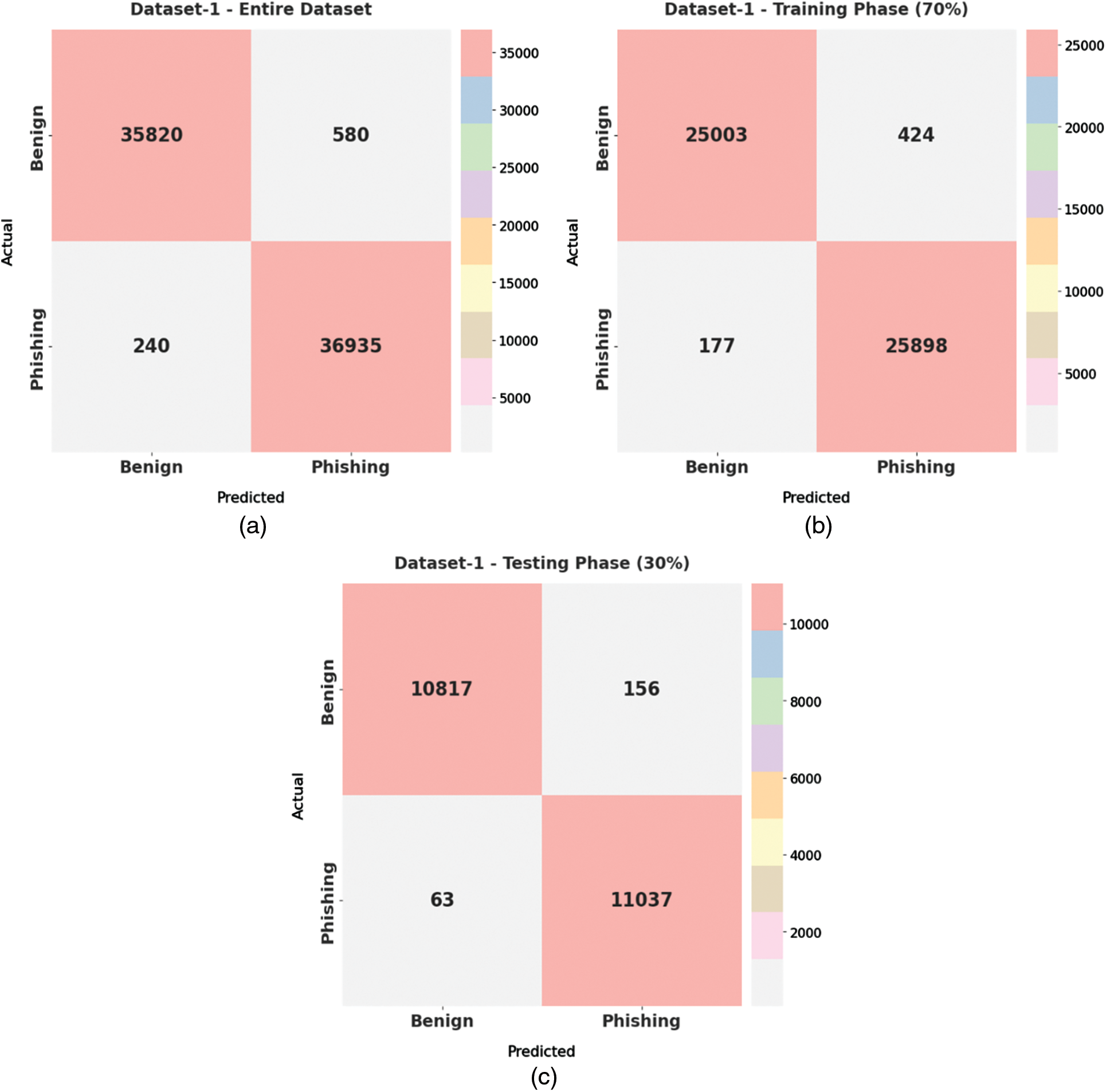
Figure 3: Confusion matrices generated by HSOHDL-PDC technique on dataset-1 (a) Entire dataset, (b) 70% of TR, and (c) 30% of TS
Tab. 2 and Fig. 4 report the overall classification analysis results achieved by the proposed HSOHDL-PDC model on test dataset-1. The table values imply that the proposed HSOHDL-PDC model produced improved outcomes under all the cases. For instance, with entire dataset, HSOHDL-PDC model provided average

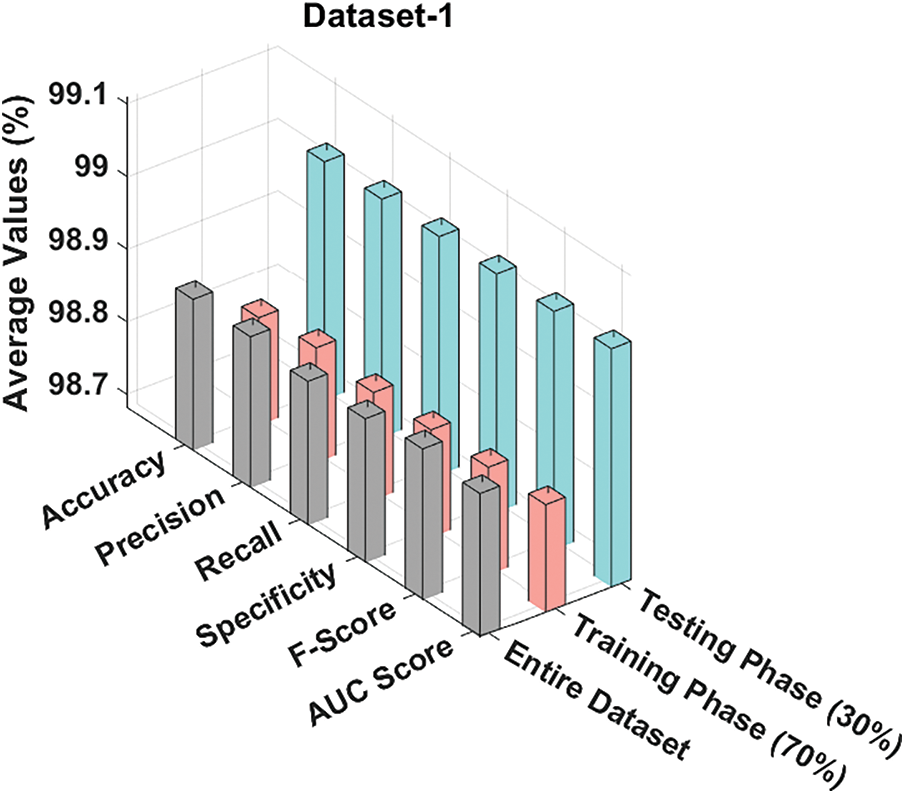
Figure 4: Results of the analysis of HSOHDL-PDC technique under different measures on dataset-1
A brief precision-recall examination was conducted upon HSOHDL-PDC technique on test dataset-1 and the results are portrayed in Fig. 5. By observing the figure, it can be inferred that the proposed HSOHDL-PDC model accomplished the maximum precision-recall performance under all the classes.
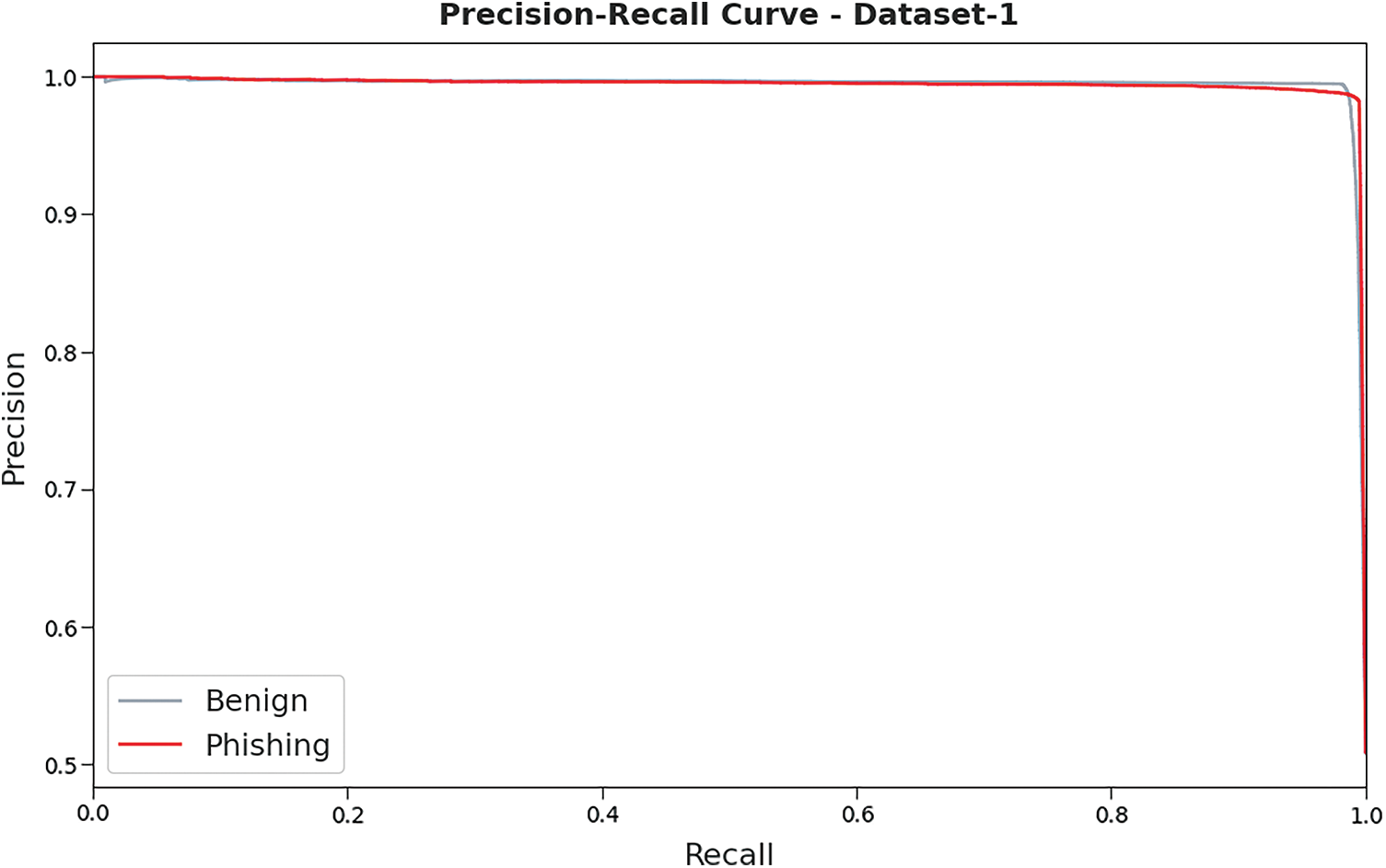
Figure 5: Precision-recall curve analysis results of HSOHDL-PDC technique on dataset-1
A detailed ROC investigation was conducted upon HSOHDL-PDC method on test dataset-1 and the results are portrayed in Fig. 6. The results imply that the proposed HSOHDL-PDC model exhibited its ability to differentiate two distinct classes such as ‘benign’ and ‘phishing’ on test dataset.
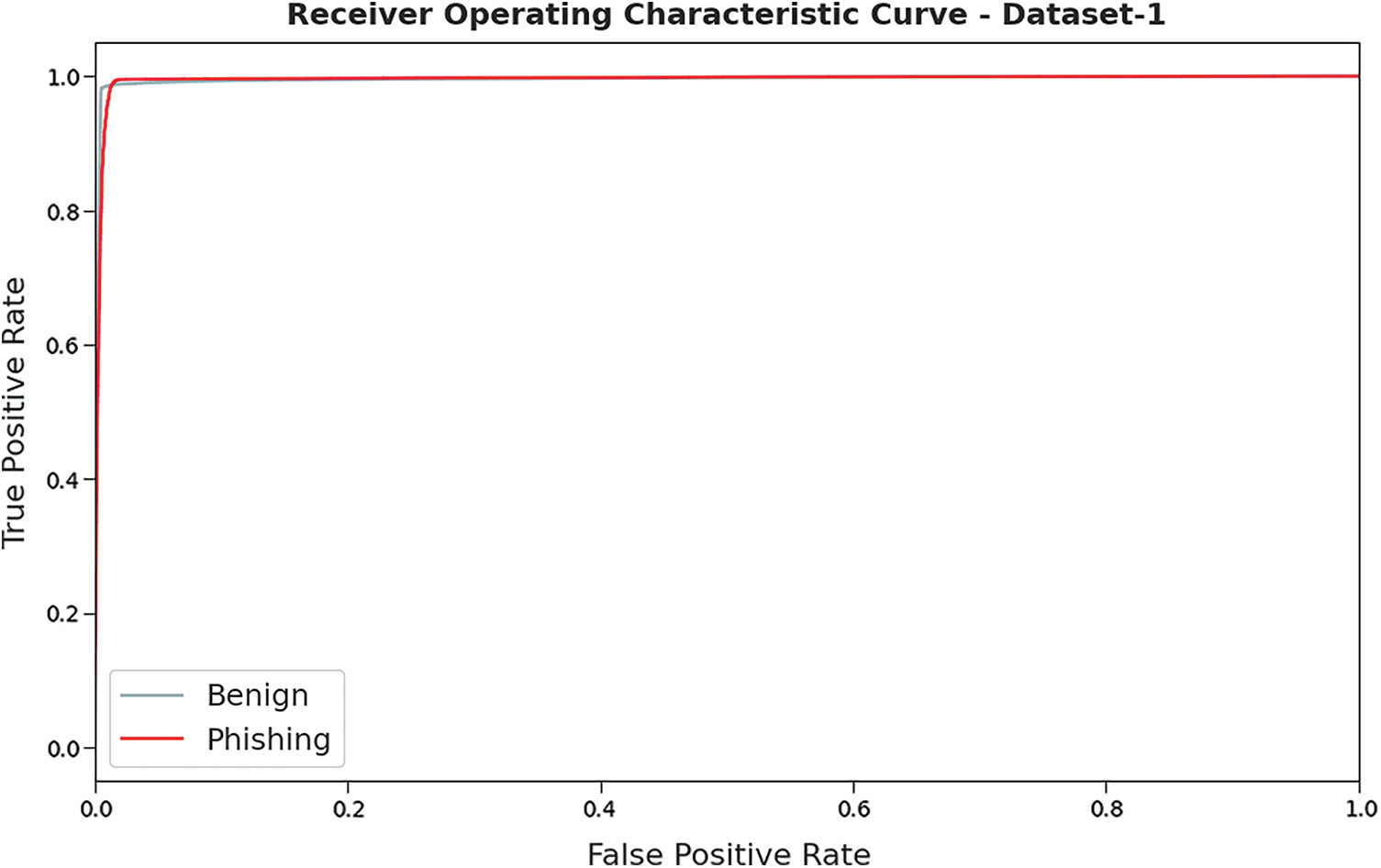
Figure 6: ROC curve analysis results of HSOHDL-PDC technique on dataset-1
Figs. 7 and 8 provide an overview on comprehensive comparative analysis results accomplished by HSOHDL-PDC and other recent models [27]. The results indicate that Gaussian NB model achieved the least performance over other methods. Followed by, multinomial NB, LR, RF, and XGBoost models showcased moderately closer classification performance. Moreover, Deep Neural Network (DNN) and CNN models demonstrated reasonable outcomes with
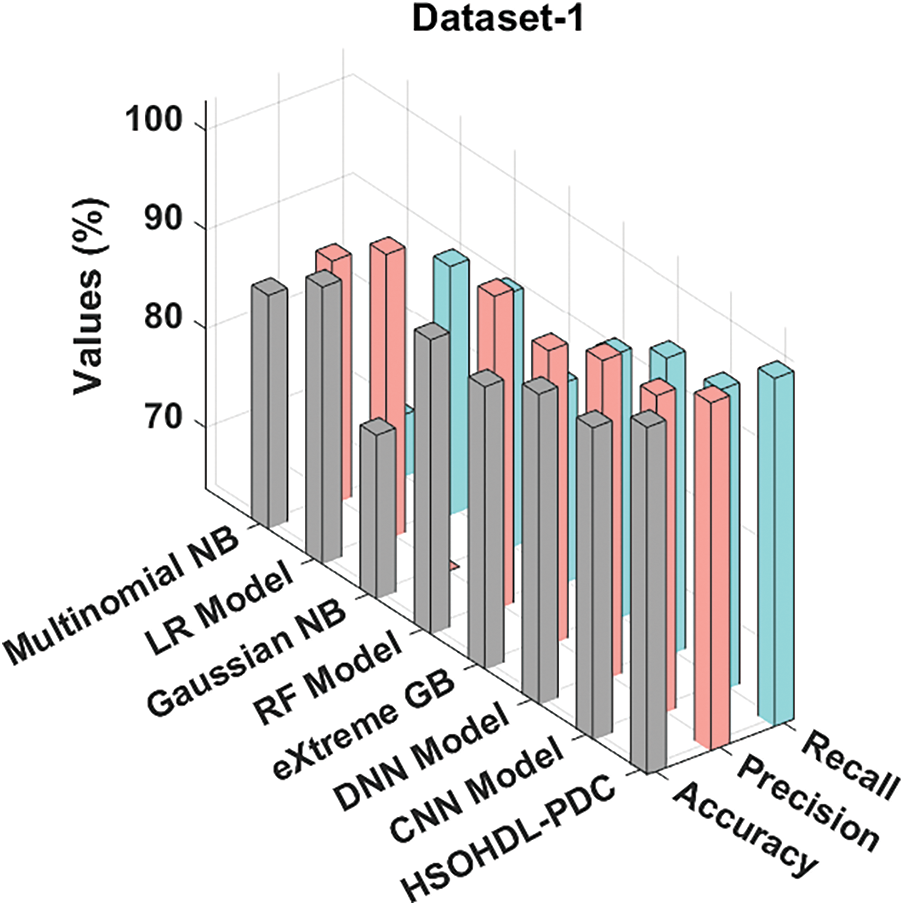
Figure 7: Comparative analysis results of HSOHDL-PDC technique on dataset-1
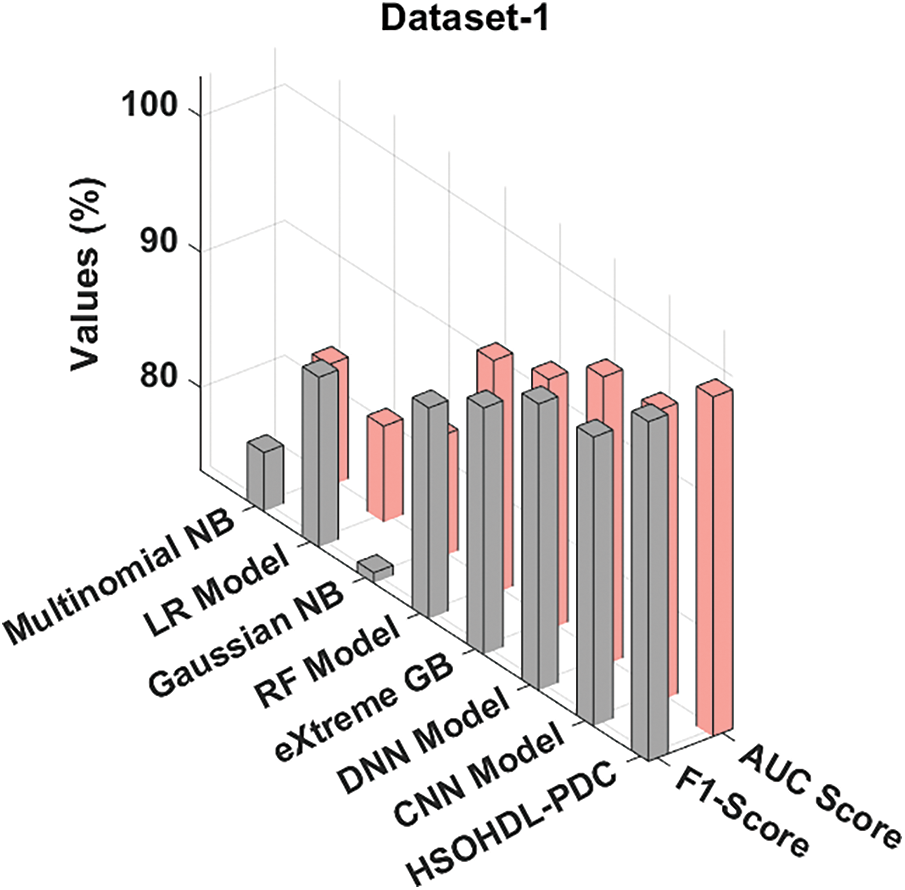
Figure 8: AUC and F1-score analyses results of HSOHDL-PDC technique on dataset-1
Fig. 9 shows a set of confusion matrices generated by HSOHDL-PDC technique on dataset-2. With entire dataset, the proposed HSOHDL-PDC model categorized 42,348 samples under benign class and 39,973 samples under phishing class. In addition, with 70% of TR dataset, the proposed HSOHDL-PDC model categorized 29,675 samples under benign class and 27,973 samples under phishing class. Eventually, with 30% of TS dataset, HSOHDL-PDC algorithm categorized 12,673 samples under benign class and 12,000 samples under phishing class.
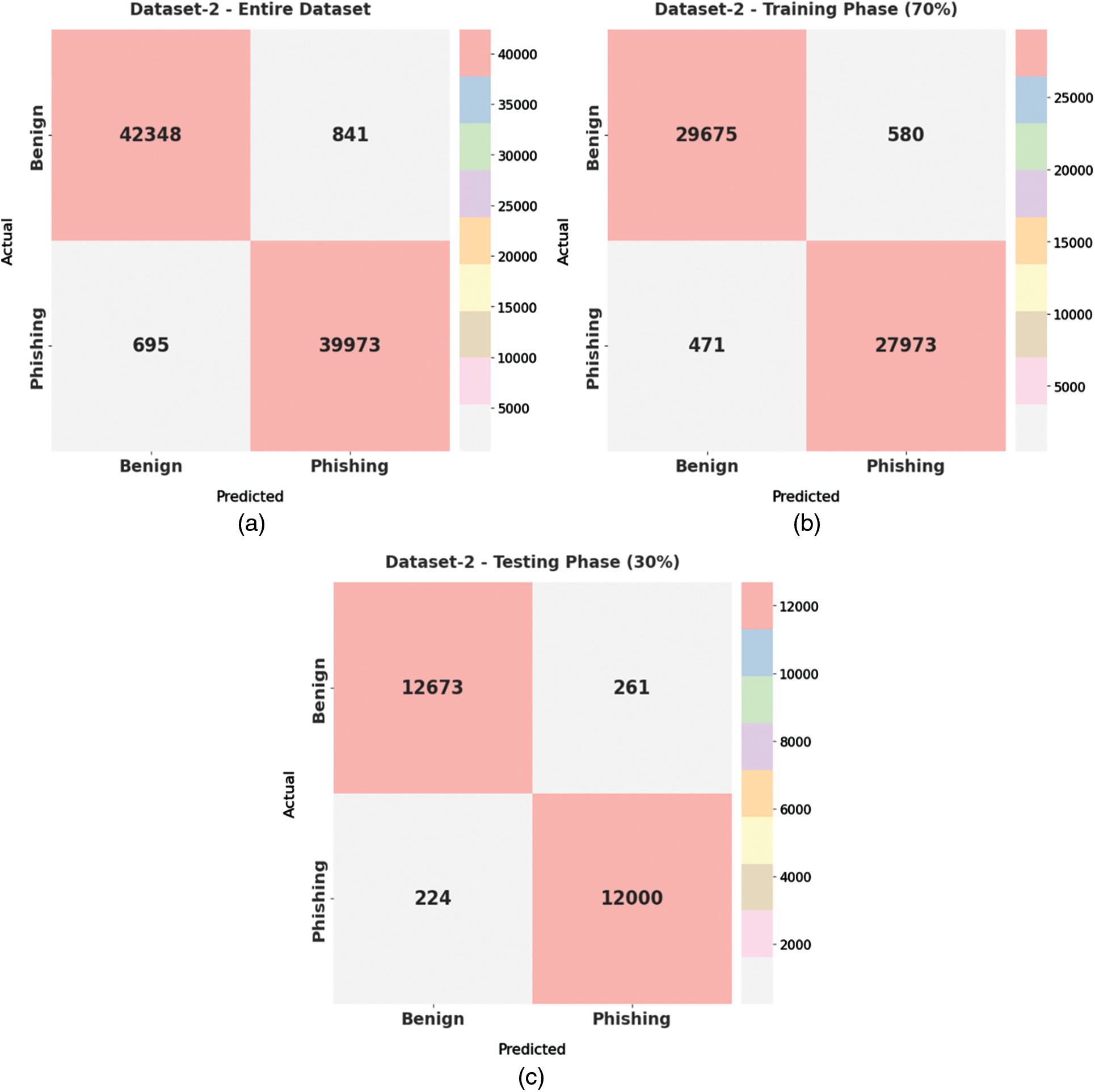
Figure 9: Confusion matrices generated by HSOHDL-PDC technique on Dataset-2 (a) Entire dataset, (b) 70% of TR, and (c) 30% of TS
Tab. 3 and Fig. 10 demonstrate the overall classification output accomplished by HSOHDL-PDC system on test dataset-2. The table values infer that the proposed HSOHDL-PDC model resulted in improved outcomes under all the cases. For instance, with entire dataset, HSOHDL-PDC model offered average

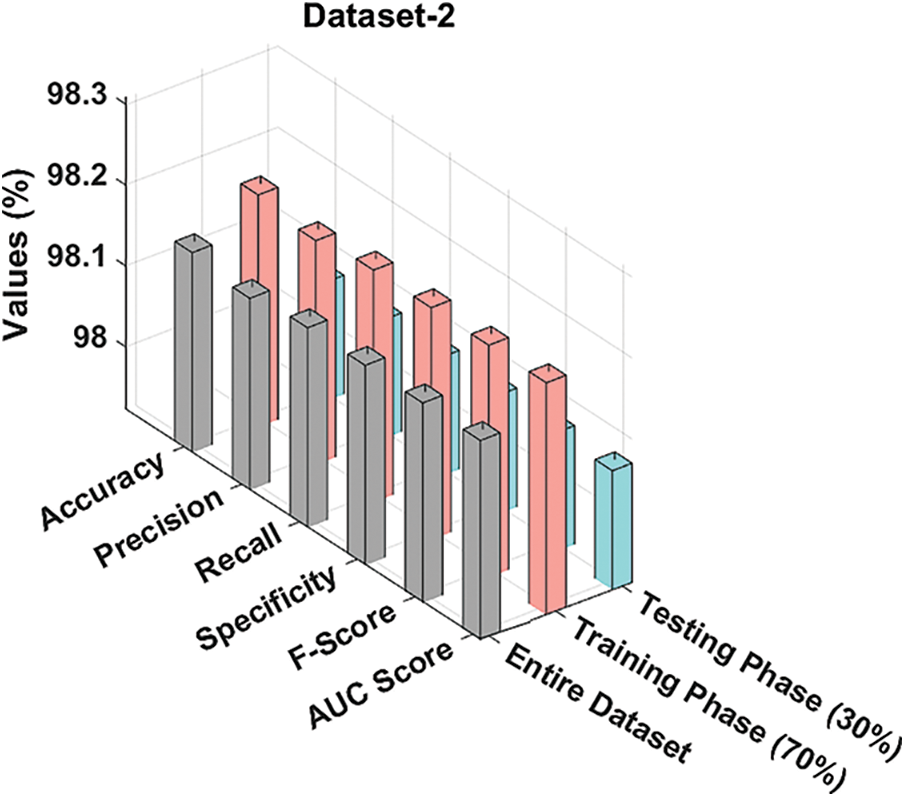
Figure 10: Results of the analysis of HSOHDL-PDC technique under different measures on Dataset-2
A detailed precision-recall examination was conducted upon HSOHDL-PDC model on test Dataset-2 and the results are shown in Fig. 11. By observing the figure, it can be understood that the proposed HSOHDL-PDC technique accomplished the maximum precision-recall performance under all the classes.
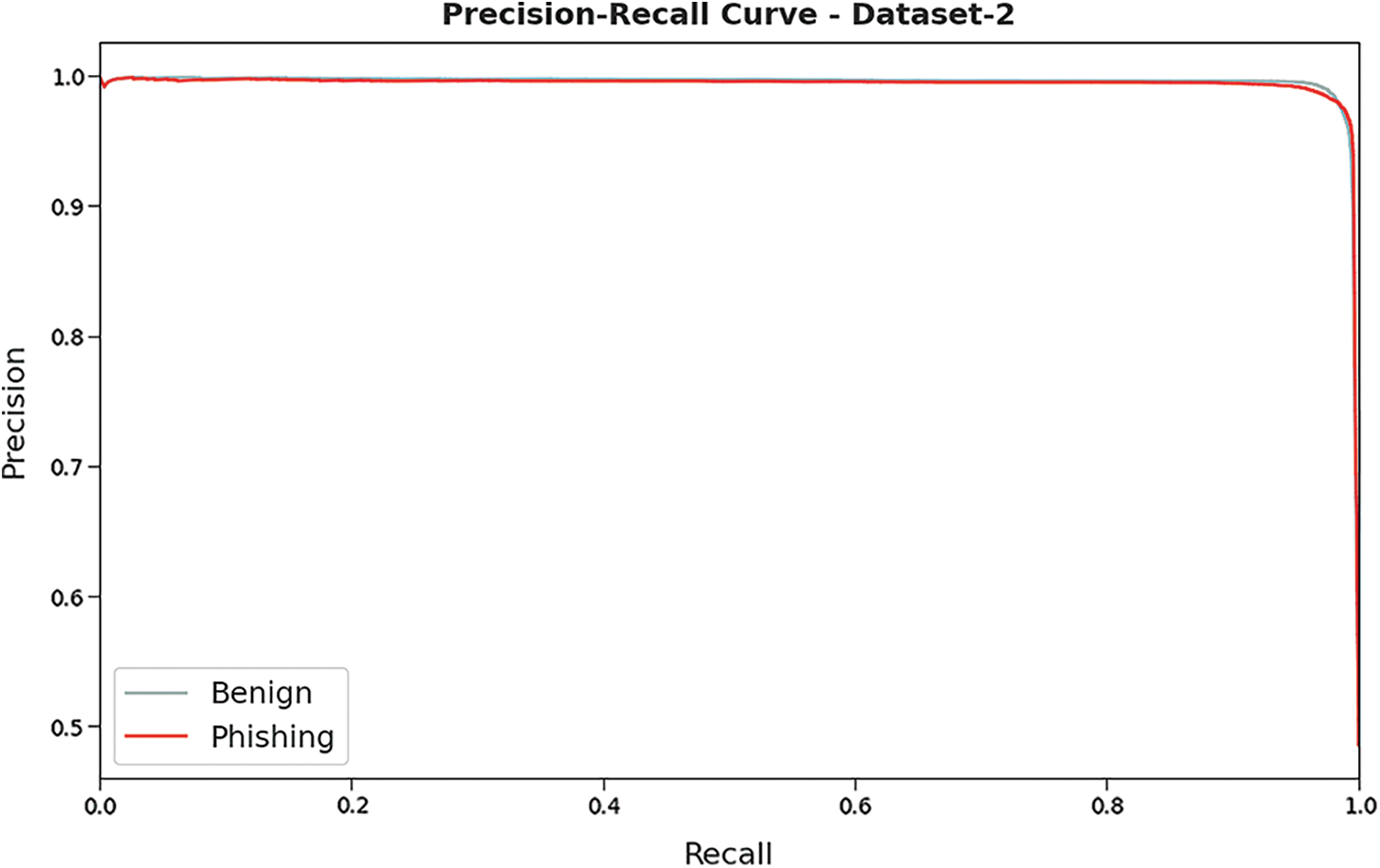
Figure 11: Precision-recall curve analysis results of HSOHDL-PDC technique on dataset-2
A brief Receiver Operating Characteristic (ROC) analysis was conducted upon HSOHDL-PDC method on test dataset-2 and the results are shown in Fig. 12. The outcomes imply that the proposed HSOHDL-PDC approach exhibited its ability to differentiate two different classes such as ‘benign’ and ‘phishing’ on the test dataset.

Figure 12: ROC curve analysis results of HSOHDL-PDC technique on dataset-2
Tab. 4 shows the comprehensive comparative analysis results accomplished by the proposed HSOHDL-PDC technique and other recent techniques. The outcomes imply that Gaussian NB approach produced the least performance over other methodologies. Next, multinomial NB, LR, RF, and XGBoost models showcased moderately closer classification performance. Besides, DNN and CNN algorithms exhibited reasonable outcomes with

In this study, a novel HSOHDL-PDC model has been developed for effective recognition and classification of phishing based on website URLs. The proposed HSOHDL-PDC model mainly utilizes character-level embedding instead of word-level embedding since URLs generally utilize words of no importance. Followed by, HSO is applied with HCNN-LSTM model for identification and classification of phishing. Furthermore, the hyperparameters of HCNN-LSTM model are optimized with the help of HSO algorithm which in turn results in improved outcomes. The performance of the proposed HSOHDL-PDC model was validated using different datasets and the outcomes confirmed the supremacy of the proposed model over recent approaches. In future, hybrid HSO algorithm can be applied to enhance the performance of he HSOHDL-PDC model.
Funding Statement: The authors extend their appreciation to the Deanship of Scientific Research at King Khalid University for funding this work through Large Groups Project under grant number (158/43). Princess Nourah bint Abdulrahman University Researchers Supporting Project number (PNURSP2022R135), Princess Nourah bint Abdulrahman University, Riyadh, Saudi Arabia. The authors would like to thank the Deanship of Scientific Research at Umm Al-Qura University for supporting this work by Grant Code: 22UQU4340237DSR22.
Conflicts of Interest: The authors declare that they have no conflicts of interest to report regarding the present study.
References
1. O. Sahingoz, E. Buber, O. Demir and B. Diri, “Machine learning based phishing detection from URLs,” Expert Systems with Applications, vol. 117, no. 4, pp. 345–357, 2019. [Google Scholar]
2. M. Zouina and B. Outtaj, “A novel lightweight URL phishing detection system using SVM and similarity index,” Human-Centric Computing and Information Sciences, vol. 7, no. 1, pp. 17, 2017. [Google Scholar]
3. G. Sonowal and K. S. Kuppusamy, “PhiDMA – A phishing detection model with multi-filter approach,” Journal of King Saud University-Computer and Information Sciences, vol. 32, no. 1, pp. 99–112, 2020. [Google Scholar]
4. H. Y. A. Abutair and A. Belghith, “Using case-based reasoning for phishing detection,” Procedia Computer Science, vol. 109, no. 1, pp. 281–288, 2017. [Google Scholar]
5. A. Butnaru, A. Mylonas and N. Pitropakis, “Towards lightweight url-based phishing detection,” Future Internet, vol. 13, no. 6, pp. 154, 2021. [Google Scholar]
6. B. Wei, R. A. Hamad, L. Yang, X. He, H. Wang et al., “A deep-learning-driven light-weight phishing detection sensor,” Sensors, vol. 19, no. 19, pp. 4258, 2019. [Google Scholar]
7. K. L. Chiew, C. L. Tan, K. Wong, K. S. C. Yong and W. K. Tiong, “A new hybrid ensemble feature selection framework for machine learning-based phishing detection system,” Information Sciences, vol. 484, no. 13, pp. 153–166, 2019. [Google Scholar]
8. T. Chin, K. Xiong and C. Hu, “Phishlimiter: A phishing detection and mitigation approach using software-defined networking,” IEEE Access, vol. 6, pp. 42516–42531, 2018. [Google Scholar]
9. A. A. Orunsolu, A. S. Sodiya and A. T. Akinwale, “A predictive model for phishing detection,” Journal of King Saud University-Computer and Information Sciences, vol. 34, no. 2, pp. 232–247, 2022. [Google Scholar]
10. J. Mao, W. Tian, P. Li, T. Wei and Z. Liang, “Phishing-alarm: Robust and efficient phishing detection via page component similarity,” IEEE Access, vol. 5, pp. 17020–17030, 2017. [Google Scholar]
11. A. K. Jain and B. B. Gupta, “PHISH-SAFE: URL features-based phishing detection system using machine learning,” in Cyber Security, Advances in Intelligent Systems and Computing book series, Springer, Singapore,vol. 729, pp. 467–474, 2018. [Google Scholar]
12. W. Wang, F. Zhang, X. Luo and S. Zhang, “PDRCNN: Precise phishing detection with recurrent convolutional neural networks,” Security and Communication Networks, vol. 2019, no. 6, pp. 1–15, 2019. [Google Scholar]
13. P. A. Barraclough, G. Fehringer and J. Woodward, “Intelligent cyber-phishing detection for online,” Computers & Security, vol. 104, no. 2, pp. 102123, 2021. [Google Scholar]
14. M. A. Hamza, S. B. Haj Hassine, I. Abunadi, F. N. Al-Wesabi, H. Alsolai et al., “Feature selection with optimal stacked sparse autoencoder for data mining,” Computers, Materials & Continua, vol. 72, no. 2, pp. 2581–2596, 2022. [Google Scholar]
15. L. Yang, J. Zhang, X. Wang, Z. Li, Z. Li et al., “An improved ELM-based and data preprocessing integrated approach for phishing detection considering comprehensive features,” Expert Systems with Applications, vol. 165, no. 2, pp. 113863, 2021. [Google Scholar]
16. A. A. Albraikan, S. B. Haj Hassine, S. M. Fati, F. N. Al-Wesabi, A. M. Hilal et al., “Optimal deep learning-based cyberattack detection and classification technique on social networks,” Computers, Materials & Continua, vol. 72, no. 1, pp. 907–923, 2022. [Google Scholar]
17. A. M. Hilal, J. S. Alzahrani, I. Abunadi, N. Nemri, F. N. Al-Wesabi et al., “Intelligent deep learning model for privacy preserving IIoT on 6g environment,” Computers, Materials & Continua, vol. 72, no. 1, pp. 333–348, 2022. [Google Scholar]
18. A. V. Ramana, K. L. Rao and R. S. Rao, “Stop-Phish: An intelligent phishing detection method using feature selection ensemble,” Social Network Analysis and Mining, vol. 11, no. 1, pp. 110, 2021. [Google Scholar]
19. E. S. Vishva and D.Aju, “Phisher fighter: website phishing detection system based on url and term frequency-inverse document frequency values,” Journal of Cyber Security and Mobility, 2021, http://10.13052/jcsm2245-1439.1114. [Google Scholar]
20. I. U. Khan, S. Afzal and J. W. Lee, “Human activity recognition via hybrid deep learning based model,” Sensors, vol. 22, no. 1, pp. 323, 2022. [Google Scholar]
21. A. Muthumari, J. Banumathi, S. Rajasekaran, P. Vijayakarthik, K. Shankar et al., “High security for de-duplicated big data using optimal simon cipher,” Computers, Materials & Continua, vol. 67, no. 2, pp. 1863–1879, 2021. [Google Scholar]
22. R. Gopi, P. Muthusamy, P. Suresh, C. G. G. S. Kumar, I. V. Pustokhina et al., “Optimal confidential mechanisms in smart city healthcare,” Computers, Materials & Continua, vol. 70, no. 3, pp. 4883–4896, 2022. [Google Scholar]
23. D. A. Pustokhin, I. V. Pustokhin, P. Rani, V. Kansal, M. Elhoseny et al., “Optimal deep learning approaches and healthcare big data analytics for mobile networks toward 5G,” Computers & Electrical Engineering, vol. 95, no. 11, pp. 107376, 2021. [Google Scholar]
24. J. A. Alzubi, O. A. Alzubi, M. Beseiso, A. K. Budati and K. Shankar, “Optimal multiple key-based homomorphic encryption with deep neural networks to secure medical data transmission and diagnosis,” Expert Systems, vol. 39, no. 4, pp. e12879, 2022. [Google Scholar]
25. P. Mehta, B. S. Yildiz, S. M. Sait and A. R. Yildiz, “Hunger games search algorithm for global optimization of engineering design problems,” Materials Testing, vol. 64, no. 4, pp. 524–532, 2022. [Google Scholar]
26. R. Rao, T. Vaishnavi and A. Pais, “CatchPhish: Detection of phishing websites by inspecting URLs,” Journal of Ambient Intelligence and Humanized Computing, vol. 11, no. 2, pp. 813–825, 2019. [Google Scholar]
27. A. Aljofey, Q. Jiang, Q. Qu, M. Huang and J. Niyigena, “An effective phishing detection model based on character level convolutional neural network from url,” Electronics, vol. 9, no. 9, pp. 1514, 2020. [Google Scholar]
 | This work is licensed under a Creative Commons Attribution 4.0 International License, which permits unrestricted use, distribution, and reproduction in any medium, provided the original work is properly cited. |